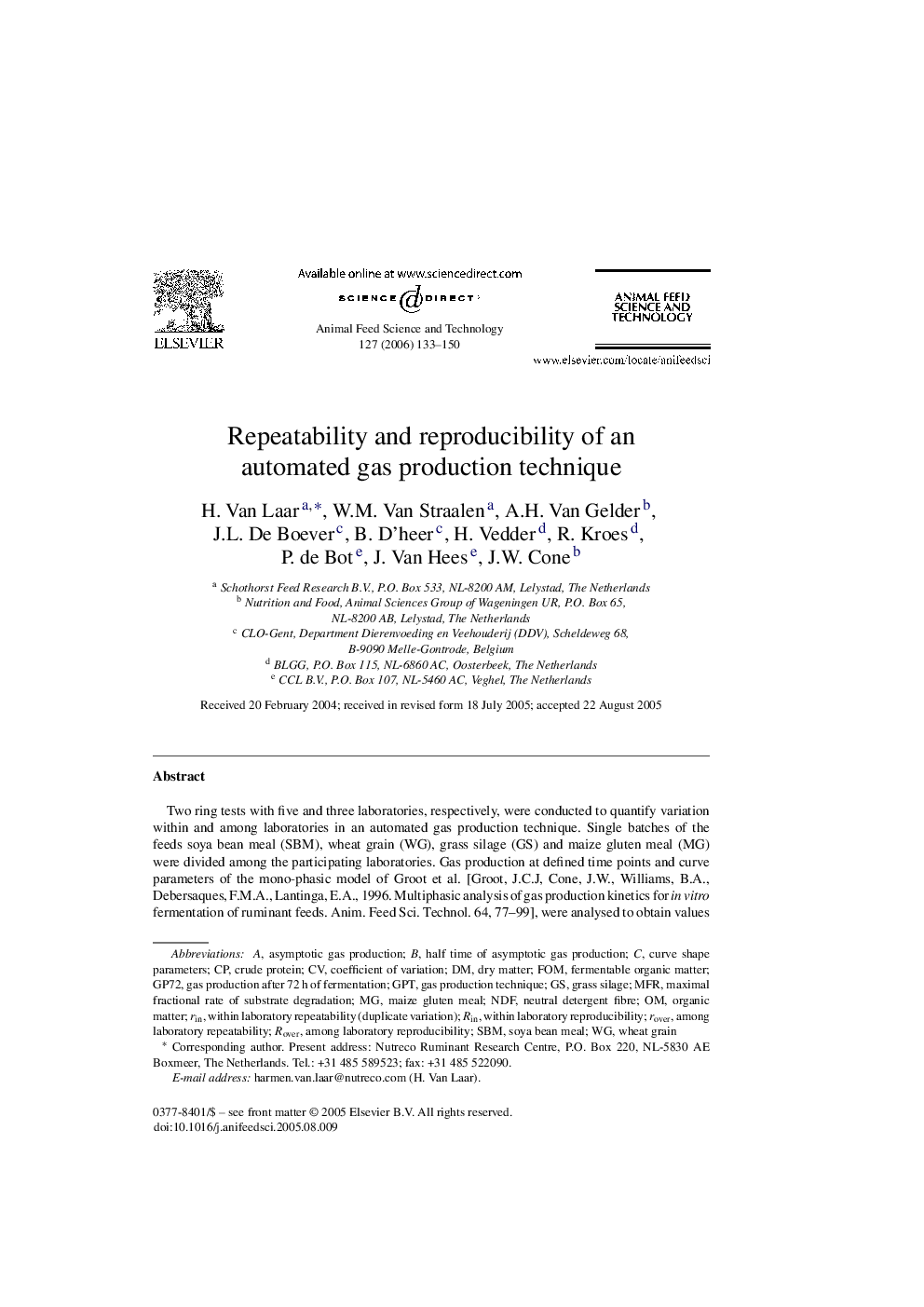| Article ID | Journal | Published Year | Pages | File Type |
|---|---|---|---|---|
| 2421216 | Animal Feed Science and Technology | 2006 | 18 Pages |
Abstract
Two ring tests with five and three laboratories, respectively, were conducted to quantify variation within and among laboratories in an automated gas production technique. Single batches of the feeds soya bean meal (SBM), wheat grain (WG), grass silage (GS) and maize gluten meal (MG) were divided among the participating laboratories. Gas production at defined time points and curve parameters of the mono-phasic model of Groot et al. [Groot, J.C.J, Cone, J.W., Williams, B.A., Debersaques, F.M.A., Lantinga, E.A., 1996. Multiphasic analysis of gas production kinetics for in vitro fermentation of ruminant feeds. Anim. Feed Sci. Technol. 64, 77-99], were analysed to obtain values for within laboratory repeatability (rin: duplicate measurements) and reproducibility (Rin: among series measurements), and for among laboratory repeatability (rover: among series) and reproducibility (Rover: among laboratories) expressed as coefficient of variation (CV). For specific feeds and gas production parameters, differences in rin and Rin among laboratories occurred, showing that within laboratory repeatability and reproducibility was not the same for all laboratories. Repeatability (rover) and reproducibility (Rover) were best for fermentable organic matter (FOM), ranging from 0.4 to 2.3% and from 0.9 to 4.9%, respectively, for ring test 1. This, although not statistically testable, was better than rover and Rover for total gas production (GP72) that ranged from 2.7 to 3.9% and from 8.2 to 9.4%, respectively. Introduction of some new incubation procedures in ring test 2 reduced duplicate variation (rin) in GP72 from the range of 1.4-10.3 to 0.2-3.1%. This range of variation in GP72 was still numerically higher than variation in FOM, from 0.2 to 1.1%, indicating that calibration of the equipment is a source of variation. Alterations in the technique were ineffective in improving Rin, or overall repeatability and reproducibility (rover and Rover). Use of a standard feed sample to correct for between run variation within laboratory numerically decreased variation (Rin) in gas production up to 10Â h (from 5 to 20% to 3 to 12.5%) and after 40Â h (from 1 to 5% to 0.8 to 3%) of fermentation, but not between 10 and 40Â h. Within laboratories, a level of rin for GP72 of 1-2%, and for Rin a level of 2-3.5% should be achievable. Use of a standard feed sample to correct for between run variation reduced Rin for GP72 to below 2%.
Keywords
maize gluten mealwithin laboratory reproducibilitygp72NDFSBMMFRFOMGPTStandardisationFermentationGas productionAsymptotic gas productionRepeatabilityReproducibilityGas production techniqueWheat grainRoverRINGrass silageCoefficient of VariationSoya bean mealneutral detergent fibreorganic matterdry mattercrude protein
Related Topics
Life Sciences
Agricultural and Biological Sciences
Animal Science and Zoology
Authors
H. Van Laar, W.M. Van Straalen, A.H. Van Gelder, J.L. De Boever, B. D'heer, H. Vedder, R. Kroes, P. de Bot, J. Van Hees, J.W. Cone,
